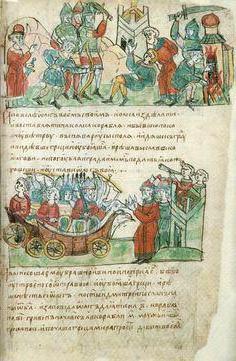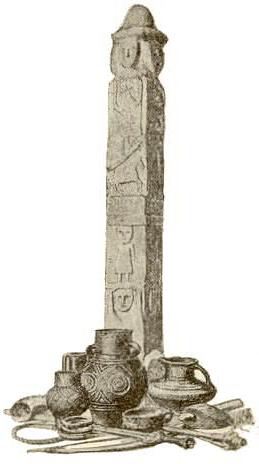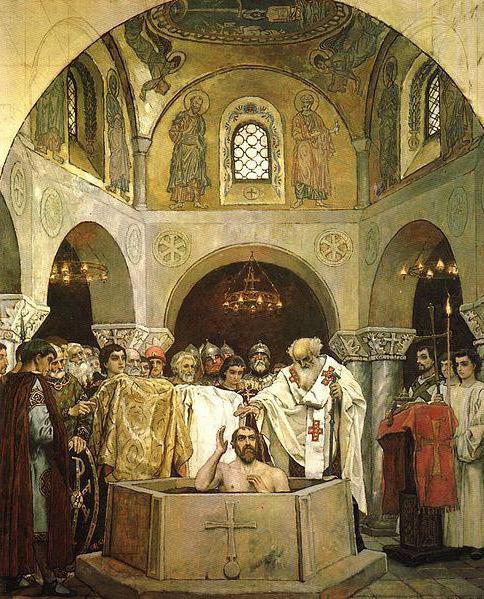Sources that have been preserved to this day tell about the features of the formation of the state, about what the culture of Ancient Russia was like. 10-13 centuries played a significant role in the development of the spiritual sphere of the country. It was a period of the formation and heyday of feudalism. The culture of Russia was formed on the basis of the achievements of the then existing tribes and the Sarmatians and Scythians who lived before them. Of course, the spiritual sphere of each nation and region had its own identity and was influenced by neighboring states.
New religion
It is difficult to overestimate the importance of adopting Christianity. Byzantium had a great influence on the development of the spiritual life of the country's population. With the adoption of the new religion in 988, it included the traditions of ancient, primarily Greek civilization. It should be noted that Slavic paganism also influenced the development of the spiritual sphere. Despite the adoption of a new faith, it continued to exist in many regions. Slavic paganism was manifested in almost all spheres of the life of the population. Getting rid of him was spontaneous. However, attempts were made to strengthen the new faith, make it accessible, bring it closer to people, explain to them the significance of adopting Christianity. Churches began to be erected in the places where the temple was previously located. So the elements of the deification of nature penetrated the new faith. The role of former gods was attributed to some saints. Elements of the spiritual life of Byzantium were reworked and received specific, national forms. From them gradually began to take shape the new culture of Russia. "The 10th-13th century gave the gospel and tradition," - as Pushkin subsequently wrote. Based on their own centuries-old customs and foundations, the masters managed to form a completely new direction. Russia enriched European culture with completely new, unique to it forms of temples, icon painting, original paintings. They can not be confused with the Byzantine, despite the apparent kinship of the pictorial language.

Architecture of Ancient Russia
10-13 centuries became a turning point in the development of architecture. For a long time the country was "wooden". Terema, huts, chapels, - everything was erected from a tree. In this material, the masters expressed their perception of proportion, building beauty, merging with the surrounding nature. With the adoption of the Byzantine religion, the whole culture of Russia began to change. The 10-13th century was a period of transition from wooden to stone buildings. Such an experience was absent in Western Europe, since the peoples who inhabited it were always built of stone. Russian wooden architecture was characterized by a multi-tiered structure, the presence of a variety of outbuildings, canopies, passages, stands, towers and towers. Carving was also traditional. Under the influence of Byzantine civilization, the building culture of Russia has radically changed. The 10th-13th century was marked by the construction of churches on the model of the cross-domed Greek temple. The first buildings were erected in strict accordance with the Byzantine traditions. The St. Sophia Cathedral built in Kiev already reflects a combination of Russian and Greek traditions. The base of the cross-domed temple was crowned with thirteen chapters. The stepped pyramid of the Cathedral resurrected the style of wooden architecture. The highest prosperity reached architecture during the reign of Bogolyubsky.

Education
At a certain stage in the development of society, the need arose to satisfy new, rather deep needs of the population. So the writing of 10-13 centuries arose. In Russia, undoubtedly, before people were able to express their thoughts on paper. But socio-economic relations began to become more complicated, the formation of statehood began. These circumstances marked the next stage, on which the culture of Russia passed. The 10-13th century was a turning point in the development of means of consolidating and transmitting ideas, thoughts and knowledge in space, preserving and disseminating the achievements of the spiritual sphere. At this time, the alphabet was created. Her appearance is associated with the names of Cyril and Methodius - Byzantine missionary monks. However, the sources indicate two alphabets - the Glagolitic and Cyrillic. The debate about which one appeared earlier was long enough. Today it is considered established that the Glagolitic alphabet was created in the 2nd half of the 9th century, and the Cyrillic alphabet arose at the turn of the 9th-10th centuries.

First books
Literature of 10-13 centuries had a special influence on the spiritual life of the population. In Russia, most of the books were destroyed during numerous Mongol invasions and fires. In total, about 150 of all that existed previously survived. The Ostromir Gospel is considered the oldest. It was compiled by Deacon Gregory in 1057 for Ostromir (Novgorod Posadnik). The high level of mastery with which the books that have survived to our time have been performed speak of the established production of manuscripts already in the 11th century, and the skills of their compilation that had been established by then. Books corresponded mainly in monasteries.
Literacy
In the 12th century, the craft of transcription passed into the city. The appearance of "book descriptors" in large settlements indicates the spread of literacy among the population. This also indicates an increased need for literature. Of the famous 39 scribes, only 15 were representatives of the clergy. The rest did not indicate belonging to the church. However, despite the spread of literacy in cities, the main book centers remained monasteries, in which special workshops operated. Permanent collectors of census takers worked in them. In addition, in such workshops involved in the compilation of chronicles.
Art of Russia
10-13 centuries were marked by the growth of forces that destroyed the political and territorial unity of the country. The collapse of the state was the result of strengthening large land tenure, economic development in cities. The latter became new centers of independent parts of the country and strove for political independence. For many cities, painting became an expression of their own role and strength. 10-13 centuries in Russia were characterized by the formation of the identity of the country's regions. Their originality was a combination of local characteristics and Kiev traditions.
Icons
The ancient art of Russia developed in a general medieval direction. Like Western and Eastern European, this movement remained largely ecclesiastical. It refracted the perception of life through the prism of Christianity, and respected the accepted iconography. Some icons of Vladimir-Suzdal masters of the 12th century are close in style to the Kiev ones created in the 11th century. Such works, for example, include an elongated image of "Deesis" from the Assumption Cathedral. The famous Yaroslavl orant is also associated with the skill of Kiev artists. Its monumental and majestic figure is close in its proportions to the mosaics of Kiev. The Yaroslavl orant resembles a solemn icon of Dm. Solunsky. She was brought from Dmitrov. This icon is distinguished by symmetry, correctness and "sculptural" modeling of a bright face.
Music
A special place in Russian life was given to songs and dances. Music accompanied people on campaigns, at work, songs were an integral part of holidays and ceremonies. Among the instruments popular were percussion (nakra, tambourine), wind instruments (horn, horn, pipe, miserable), strings (harp). The famous frescoes in the St. Sophia Cathedral depict musicians and dancers. It should be said that the prevalence and degree of use of tools was different. Pipes, for example, acted as signaling means in the hunt. Tambourines and string instruments were used separately or as part of an orchestra for festivities and games. In some sources there are indications of a fairly early appearance of musical notes. The adoption of Christianity greatly facilitated this. Singing was accompanied by worship. It was based on specially composed singing books. Such manuscripts date from the 12th century. In them, in addition to liturgical texts, there are musical notations “hooks” and “banners”.

The content and direction of spiritual development
Defining it, it should be noted that the historical and cultural process in Russia was based on folk art. It has become the source and starting point of the spiritual development of the population. In conditions of feudal fragmentation, devastating attacks of external enemies, the culture of Russia revealed the original creative potential of the people. He nurtured and contributed to the development of the state. The culture of Russia reflects a bright sense of optimism, it acts as a life-affirming force. Creative works of the people living in the conditions of the feudal era are characterized by:
- A firm belief that good will certainly conquer evil.
- The beauty of the military and labor feat.
- High morality and nobility.
- Selfless love for their land.
- Inexhaustible, good humor.
- Deep poetry.
- Accurate emphasis on traditional life phenomena, the accuracy and soundness of their assessments.
All these unique qualities of the Russian people in one form or another were expressed not only in the books of medieval Russia, but also in icons, frescoes, architecture, music.
Influencing factors
The development of culture of Russia 10-13 century. reflected the contradictions and features characteristic of this era. They were determined by the economic, social and political processes that took place in the state. The mode of production that existed under the feudal system was marked by a certain conservatism in the improvement of production forces. He was characterized by the isolation of subsistence farming. The exchange was poorly developed. All this slowed down cultural development, created obstacles to the formation of local characteristics and traditions. The Tatar-Mongol invasion had a special influence on the spiritual life of the people.
Conclusion
Of course, the predominance of a religious worldview was of great importance for Russian culture . A certain role, especially in the early Middle Ages, belonged to the church. She contributed to the spread of literacy, the development of painting, and the improvement of architecture. At the same time, the church was careful and defended its dogmas. She was hostile to new cultural trends. The church formed obstacles to the formation of science, the improvement of technical knowledge. Nevertheless, the cultural achievements of medieval Russia are inalienable values of the state. They are part of the national heritage, greatness and glory of the people.